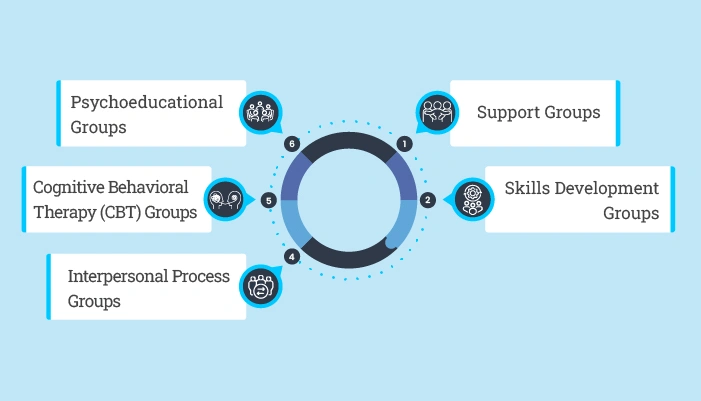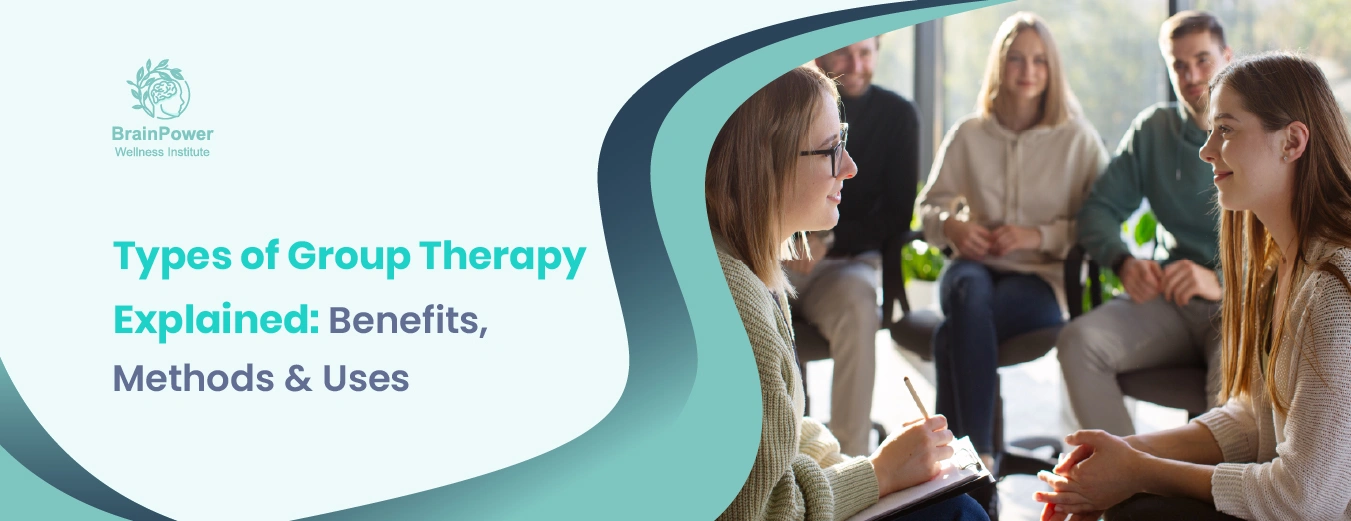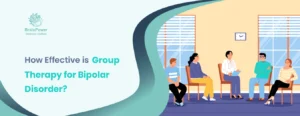Have you ever felt that you are the only person who is going through a tough time?
That feeling of being totally alone, where your emotional and mental struggles can be heavy.
For all those struggles, there is a solution like group therapy. This is a powerful way to heal and for personal growth. It offers a supportive environment where group members can connect with all their shared experiences.
Unlike individual therapy, group therapy is more than just talking in a room; it is a community where you realize you are not alone. It is integrated into a comprehensive treatment plan.
It is a chance to learn new things, forget past traumas of life, get support, and practice new ways of handling your life in a safe, guided space.
Group therapy is not a one size that fits approach. It’s a form of psychotherapy that involves one or more therapists who work with groups of people at the same time to let them share their experiences. When you share your story and feelings with others and hear from them, a powerful kind of healing begins.
Brainpower Wellness Institute knows how much people need real human connections to heal. This is why we are among the big believers in group therapy for complete mental health and emotional connection.
We offer different types of group therapy because people need it differently, as per their disorder symptoms.
To help you understand which kind might be right for you, let us explore some of the most effective group therapy options and how they work.
1. Psychoeducational Groups
What is it?
Psychoeducational groups focus on teaching coping strategies to help people handle specific challenges in their lives. These groups are designed to educate members on specific topics like stress management, substance abuse treatment, and Anxiety Control. The group is facilitated by therapists to combine structured lessons with group discussion to equip members with practical tools and coping strategies.
This type of group is like taking a helpful class for your mental well-being. The main goal is to teach you factual information about a specific concern, such as anxiety, stress, or a certain diagnosis, and then give you practical steps to manage it.
- Benefits: You get a solid foundation of knowledge, which helps you understand why you feel the way you do. Learning practical, real-world skills in a group setting gives you confidence.
- Usage: This is great for people who want to understand their struggles better and learn specific coping strategies. Common topics include managing stress, understanding depression, and developing communication skills.
- Method: A trained professional leads these sessions, sharing information through structured lessons, discussions, and worksheets. The focus is on teaching skills and knowledge, rather than deep personal sharing.

2. Cognitive Behavioral Therapy (CBT) Groups
What is it?
Cognitive behavioral group therapy is focused on actions. They work on basic ideas that your mind, thoughts, feelings, and actions are all connected. The goal is to help individuals recognize negative thought patterns and behavior and change them into positive, practical ones.
Participants learn to challenge unhelpful thinking and develop better coping skills. They also build resilience in their behaviors. These CBT groups work well for anxiety, depression, and post-traumatic stress disorder.
- Benefits: You gain clear, hands-on techniques for dealing with issues like anxiety, panic, and negative thoughts. It is a highly practical way to build better habits and ways of responding to life’s challenges.
- Usage: Highly effective for anxiety, depression, phobias, and managing strong emotions. It helps people who are ready to actively challenge themselves and change their day-to-day responses.
- Method: CBT sessions are goal-oriented, and often these sessions involve homework and practice. The experts help members identify specific unhelpful thoughts and “test” them in a group setting. Techniques can include thought records and role-playing to practice new ways of acting.
3. Interpersonal Process Groups
What is it?
This group is about relationships and understanding how you connect with other people.
The group setting serves as a real-time laboratory where participants can observe and understand how their typical relationship patterns play out. In this mini-world, participants can explore how to relate to others and how their actions affect others. They receive immediate feedback and practice different behaviors.
Instead of just talking about past problems, members of the group begin to act out their problematic interpersonal behaviors and dynamics in the “here and now” of the Group sessions.
- Benefits: This setting provides immediate, respectful feedback, helping you become more aware of your relational shapes. It is a powerful way to improve your confidence, develop trust, and build deeper, more satisfying connections outside of the group.
- Usage: This therapy is best for people who want to work on improving their social skills, feeling more confident, struggling with relationships, or understanding why certain interactions keep happening in their lives. This is also best for controlling anger issues.
- Method: These groups are less structured than CBT. The connections are happening between members during the meeting. The professional guides the group to talk about feelings and reactions as they happen.
4- Support Groups
What is it?
Supportgroups provide a safe and understanding environment for people who are experiencing similar challenges, like grief, sadness, addiction, or chronic illness. These groups provide connection and mutual help among participants.
- Benefits: Group members can have emotional support, reduced isolation, and increased coping skills. When they share personal experiences, it helps normalize feelings and encourages healing through empathy and understanding.
- Usages: This therapy is used widely in mental health, medical recovery, and social service settings. They are especially helpful for those who are managing long-term emotional or physical struggles and seeking a sense of belonging.
- Methods: It iscarried out by professional therapists or peer leaders. The sessions involve open discussions, storytelling, and reflection. However, confidentiality and respect are key principles to creating a trusting environment.
5- Skills Development Groups
What is it?
These groups aim to teach and enhance practical life skills such as communication, assertiveness, and problem-solving.
- Benefits: Group participants can have improved effectiveness, confidence, and emotional regulation. Learning in a group lets you have feedback, modeling, and practice in a supportive setting.
- Usages: professional therapists can conduct such sessions in therapeutic, educational, and workplace environments to promote social competence and personal growth. This is best for people who want to build specific practical life skills like social interaction, emotional regulation, or daily functioning.
- Methods: Therapists and psychiatrists use role-playing, with structured exercises and feedback sessions. Group members practice real-life scenarios to strengthen new behaviors and apply them outside the group.

Differences of Group Therapies
The main difference between types of group therapy lies in their focus. For example, cognitive behavioral therapy (CBT) and its derivatives focus on changing unhelpful thought patterns and behaviors. Psychodynamic therapy explores how past experiences and unconscious motivations influence present feelings. Humanistic therapies emphasize personal growth, self-acceptance, and current experiences.
Each approach has different goals and techniques that range from goal-oriented and practical to insight-oriented, like CBT, and exploration to client-led and acceptance-based, like humanistic therapy. However, the major differences are explained in the table below:
| Characteristic | Psychoeducational Groups | Cognitive Behavioral Therapy (CBT) Groups | Interpersonal Process Groups | Support Groups | Skills Development Groups |
|---|---|---|---|---|---|
| Primary Goal | To provide information and coping skills to manage specific challenges or conditions. | To identify and change negative or distorted thought patterns and behaviors that contribute to mental health issues. | To improve communication skills, resolve relationship conflicts, and explore how interpersonal relationships affect mental health. | To provide emotional support, understanding, and connection among individuals with shared experiences of addiction, chronic illness, or other challenges. | To teach and strengthen specific skills like emotion regulation, assertiveness, and problem-solving for personal and interpersonal situations. |
| Structure | Highly structured and often manualized, with a set curriculum and specific topics for each session. | Structured and goal-oriented, often time-limited, with specific exercises and potential homework. | Less structured and more open-ended, focusing on the real-time dynamics and interactions within the group itself. | Usually semi-structured, which includes sharing and discussion within a safe, confidential space. | Moderately structured, with skills training and sharing-based exercises. |
| Focus | Education and skill acquisition (e.g., stress management, emotion regulation). | The connection between thoughts, feelings, and behaviors, and applying skills to current issues. | Group dynamics, here-and-now interactions, and past experiences to understand present relationship patterns. | Emotional expression, mutual empathy, and shared experiences to reduce isolation and promote healing. | Learning and practicing targeted skills that can be applied to real-life interpersonal situations. |
| Facilitator’s Role | Primarily an instructor or educator, actively leading discussions and providing information. | A directive therapist who guides the process of identifying and challenging thought patterns. | A less directive facilitator who observes and interprets group interactions to help members gain insight into their interpersonal styles. | Acts as a supportive guide to ensure safety, empathy, and respect while encouraging member interaction. | Functions as a coach, teaching and reinforcing desired behaviors, fostering skill application. |
| Techniques Used | Didactic presentations, discussions, and skills practice. | Cognitive restructuring, behavioral experiments, skills training, and homework. | Facilitating open discussion, providing feedback on interpersonal interactions, and exploring transference/countertransference dynamics. | Group discussions, storytelling, peer feedback, and emotional sharing. | Role-playing, modeling, behavioral rehearsal, and structured exercises with feedback. |
The Core Advantage of Group Therapy
For many people, group therapy can be more advantageous than individual therapy, particularly for those who are struggling with interpersonal issues, social skills deficits, and feelings of isolation. However, the best type of therapy depends on a person’s specific needs, comfort level, budget, and treatment goals. Both methods have different benefits and drawbacks.
Reduced Feeling Of Isolation
Mental health struggles can make you feel isolated from your dear ones and peers. Group therapy places you in a room with others facing similar challenges, which can be a powerful and reassuring experience. This sense of shared experience or universality helps reduce feelings of shame and makes you feel less alone.
Offers a support system
Unlike individual therapy, the group offers a network of peer support. Members can support each other’s feelings and offer encouragement. This method creates a powerful sense of community. This mutual support can be a strong motivator for recovery.
Provides a diverse perspective
In individual therapy, you receive feedback from one person. In a group. You hear a variety of viewpoints from members who have different backgrounds and experiences. This can help you see your own problems in a new light and discover new coping strategies.
Acts as a social laboratory
Group therapy is an ideal environment for individuals to practice and improve their social and communication skills in a safe, controlled setting, for those who are struggling with social anxiety and relationship issues. This real-time interaction can be particularly beneficial.
Cost-effective
Because therapist time and appointments are shared with many people, group therapy and its kinds are typically affordable than individual therapy. This can make mental health care more accessible to a wider range of people.
Take Aways
Different types of group therapy provide a helpful, supportive, and sometimes experimental environment where you can build social connections, take emotional accountability, and receive help.
Psychoeducational groups are like a classroom that teaches members about a condition and management skills. CBT groups are like practical workshops that focus on changing unhelpful thinking and behavioral patterns through structured exercises. Finally, interpersonal groups are like an experiential setting, where the group itself is used as a social microcosm to explore and improve relationship dynamics and communication skills.
You might be thinking about what type of therapy might be suitable for you, and where to seek guidance. No worries, we are here to guide you.
At Brainpower Wellness Institute, your well-being is our main focus. Our different group therapy options are carefully designed and run by experienced, caring professionals who create a secure, private space for everyone. We make sure every person feels respected, heard, and supported on their personal path to healing.
We know starting something new can feel like a big step, but finding a community that understands you can be the most powerful step you take toward a healthier, more fulfilling life.
Are you ready to find the group that feels right for you?
Call us today or visit our website to see our current group schedule and enroll. Your path to connection and growth starts here.




